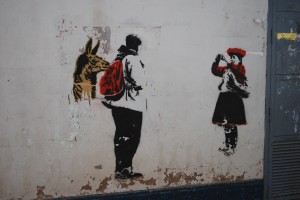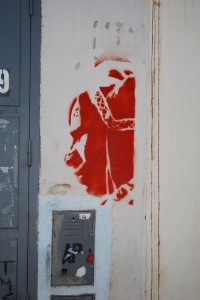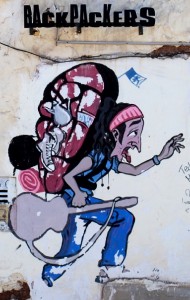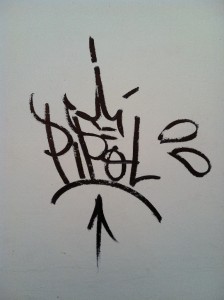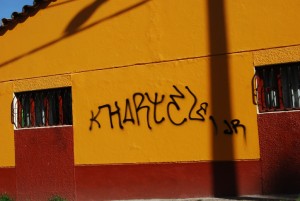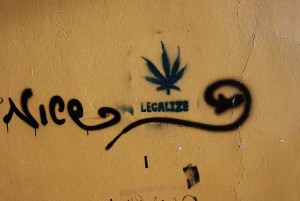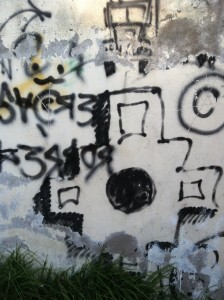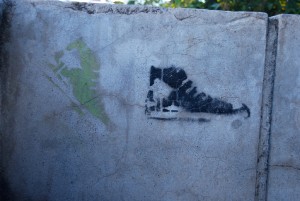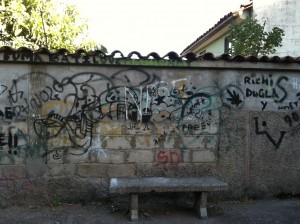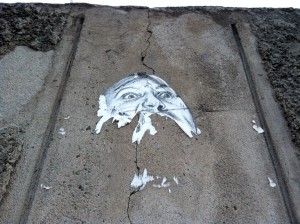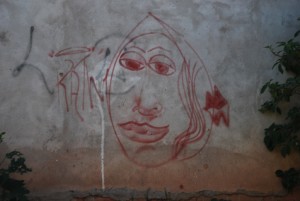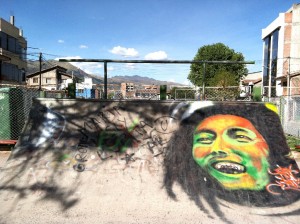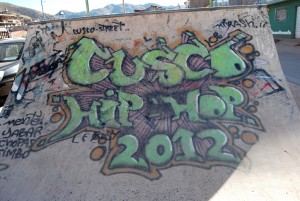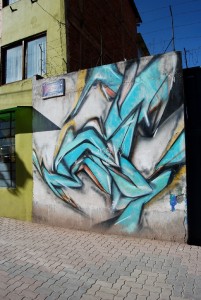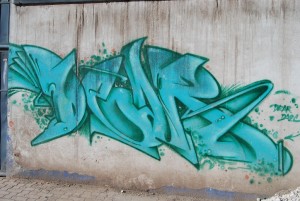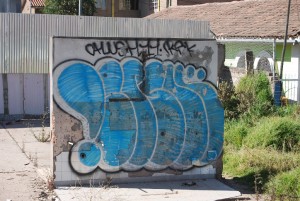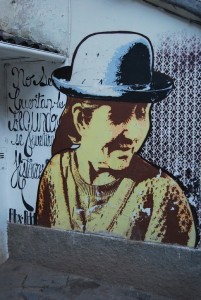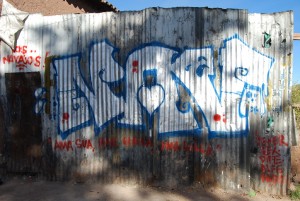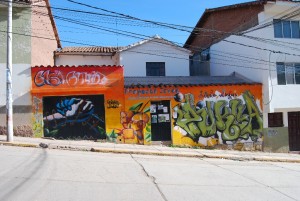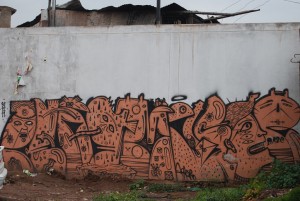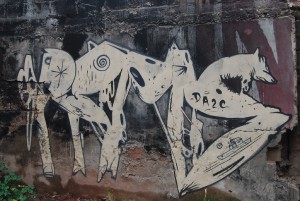Rich Culture of Graffiti in Cuzco

The walls of Cuzco form a tempting target. White or beige, occasionally marked by sky blue balconies or doors, its walls extend as if a vast, colonial canvas waiting to be tagged. Though the city fathers love the pristine image of a town right out of Seville, although with Inca foundations instead of Arab, nonetheless from time immemorial these Spanish walls have been a public bulletin board for conflict, politics, and just self announcement.
But Cuzco is more. Besides being a picturesque blend of Inca and Spanish, it is also a crossroads where influences from much of the world pass through and some come to rest. Of course, part of this is because of the millions of tourists who come here each year where Cuzco is a ways station on the way to Machu Picchu or an end in itself. But part is also the currents of international and Peruvian modernity that climb up the mountains from the nation’s capital, Lima, as well as the wealth of a local culture with deep roots.
Recently, we drove through the city looking at graffiti. Though not one of those world centers of the painter’s art, such as Berlin, Cuzco still shows a rich and complex set of images and words motivated by the diversity of Cuzco`s historical circumstances.
Without doubt, the vast majority of scrivenings on walls, posts, and concrete, are relatively simple tags, most announcing either a person’s existence or desires, or claiming space for organized groups, such as fans of sports teams. These are generally relatively simple, although in the style of letters on notes the influence of international styles of writing.
In addition, we saw more elaborate, pictoric work of named crewes, often signed, which are in dialogue with international images and styles as well as local images and concerns. These crews claim an affiliation with the international musical and cultural form hip hop.

These forms of graffiti also claim an association with youth. As a result, the local youth organization Centro Cultural Sipas Wayna had the front of their building painted in graffiti style in order to emphasize its interest for youth and its focus on youth.
Graffiti of this sort borders on public art, rather than the product of independent crewes working with their own ideas and values. We saw another example of an auto repair shop emphasizing paint jobs that had also commissioned a work of art for their front wall as an advertisement of sorts on the popular Alameda Pachacutec of their place as hip and cool among paint shops.
Examples of public art are also found, shifting from graffiti style to murals–although we have not included mural art in our photos below.
Crewes, however, see to be from a more established social class, despite the claims of the art of independence and alienation. Although not included in our photos, there is a vacant house in Cuzco, on Saphi street, whose two, decaying floors are covered with graffiti. This place, called the Haunted House in Cuzco, gives the impression more of a place of a squat, or a place where street kids, often with little money, go to party and play. We will make it the subject of a separate article.
As one final comment, it looks like European or American artists have also left some work on Cuzco’s walls, as they pass through.
Though Cuzco’s culture of graffiti is rich, there are strong limits. Graffiti lives in balance between challenging the rights of property and propriety and search for legitimacy. In Cuzco, evidently a group of foreigners sprayed a line of paint on Inca stone walls and other things, which was seen as a terrible disrespect of Cuzco and its past, triggering strong police action.
There is a school for graffiti in Cuzco, at the Cultural Center Sipas Wayna, were graffiti loses its more challenging, anti-establishment values to be a cool, international youth form that fits within the boundaries of acceptable youth culture within the city.
Over the last two or three years, graffiti is ever more visible. It is growing, along with other hip hop forms, such as break dance, increasing a demand for experts from Lima and abroad to come and teach.
Whatever one might think of graffiti, as a crossroads, Cuzco’s graffiti is here to stay, certainly as long as their is youth interest in the form. It promises to continue to develop in the engagement of international style with local cultural issues.
Here is a representative sample of what we say on Cuzco’s walls as we drove and walked through it.
